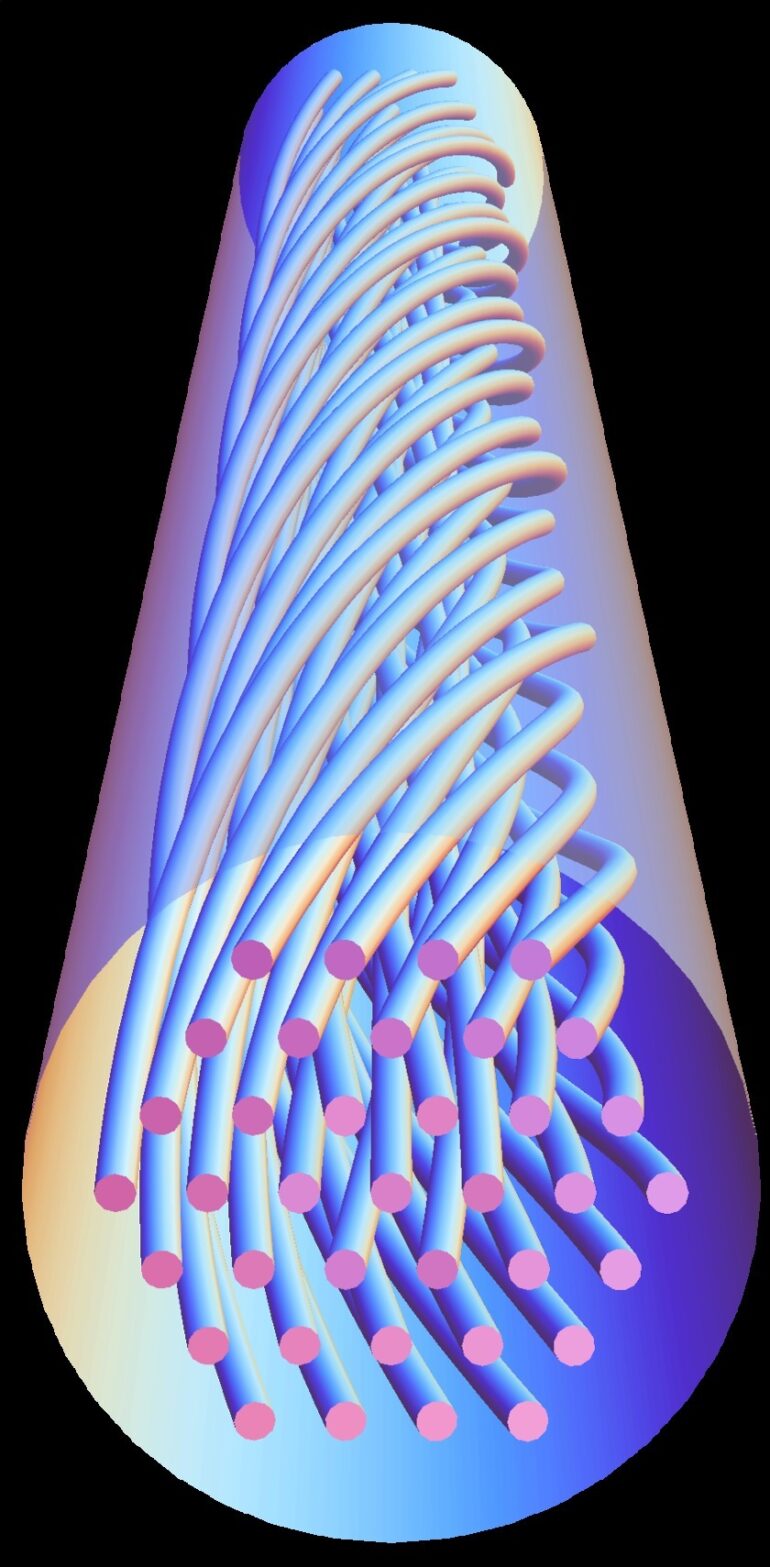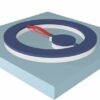Researchers from two laboratories at ULB have realized a synthetic dimension for light using a fiber optic ring. This ingenious system simulates the periodic motion of a particle in a crystal in order to study its behavior in the presence of interactions and dissipation. By creating a soliton, the researchers demonstrated the existence of permanent oscillations, despite the detrimental effects of dissipation. This discovery allows the study and modeling of complex phenomena inspired by solid-state physics, which are difficult to access in their natural environment.
The formation of periodic structures such as optical lattices assists in the investigation of various complex phenomena in solid-state physics, condensed matter, and photonics, among others. In particular, extending these systems beyond their natural geometrical dimensionality is a growing field of research through the implementation of “synthetic dimensions.”
Such a synthetic space can be realized by exploiting the system’s discrete degree of freedom, which, associated with a coupling mechanism, mimics the motion of a particle moving within a crystal lattice. An original way to create a synthetic dimension in photonics is to implement it in the frequency domain (wavelengths of light) through an optical resonator. The periodicity imposed by the cavity roundtrip time acts as an optical rule. One can then form the artificial lattice by coupling these frequency modes using an intracavity phase modulator.
The resulting synthetic dimension is very similar to that formed by a one-dimensional crystal, where atoms are coupled to their nearest neighbor. Therefore, we expect to observe phenomena from solid-state physics. Among others, synthetic dimensions have been exploited to observe Bloch oscillations—the motion described by particles confined in a periodic potential when subjected to a constant force. This phenomenon—worthy of the 1952 Nobel Prize in Physics—is known to disappear when the system is dissipative or in the presence of interactions. In fact, they are not observed in solids.
In this context, researchers from two ULB laboratories, the Laboratoire interdisciplinaire Carnot de Bourgogne (Dijon), and the University of Auckland (NZ) have implemented a synthetic dimension with dissipation, dispersion and nonlinearity to study the fate of these oscillations. Thanks to the system’s nonlinearity, the researchers were able to form a peculiar light pulse called a “cavity soliton” and observe permanent Bloch oscillations despite the dissipation.
In addition to being the first experimental demonstration of Bloch oscillations in that framework, the intrinsic properties of the cavity soliton allow both the extension of the synthetic dimension far beyond previous realizations thanks to the formation of a frequency comb and probing of the reciprocal space by virtue of its ultrashort temporal duration.
This discovery holds great potential for studying and modeling complex phenomena from condensed matter physics that are difficult to investigate in their natural environment. These results also pave the way for new applications, notably in topological photonics and for the generation of optical frequency combs.
The work is published in the journal Nature Physics.
More information:
Nicolas Englebert et al, Bloch oscillations of coherently driven dissipative solitons in a synthetic dimension, Nature Physics (2023). DOI: 10.1038/s41567-023-02005-7. On arXiv: arxiv.org/abs/2112.10756
Provided by
Université libre de Bruxelles
Citation:
Fiber optics shed light on solid-state physics phenomena (2023, April 12)



